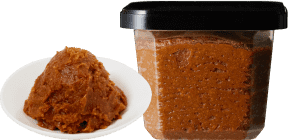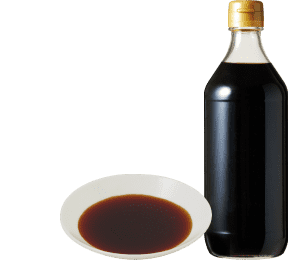SOY
SAUCE
Study UMAMI
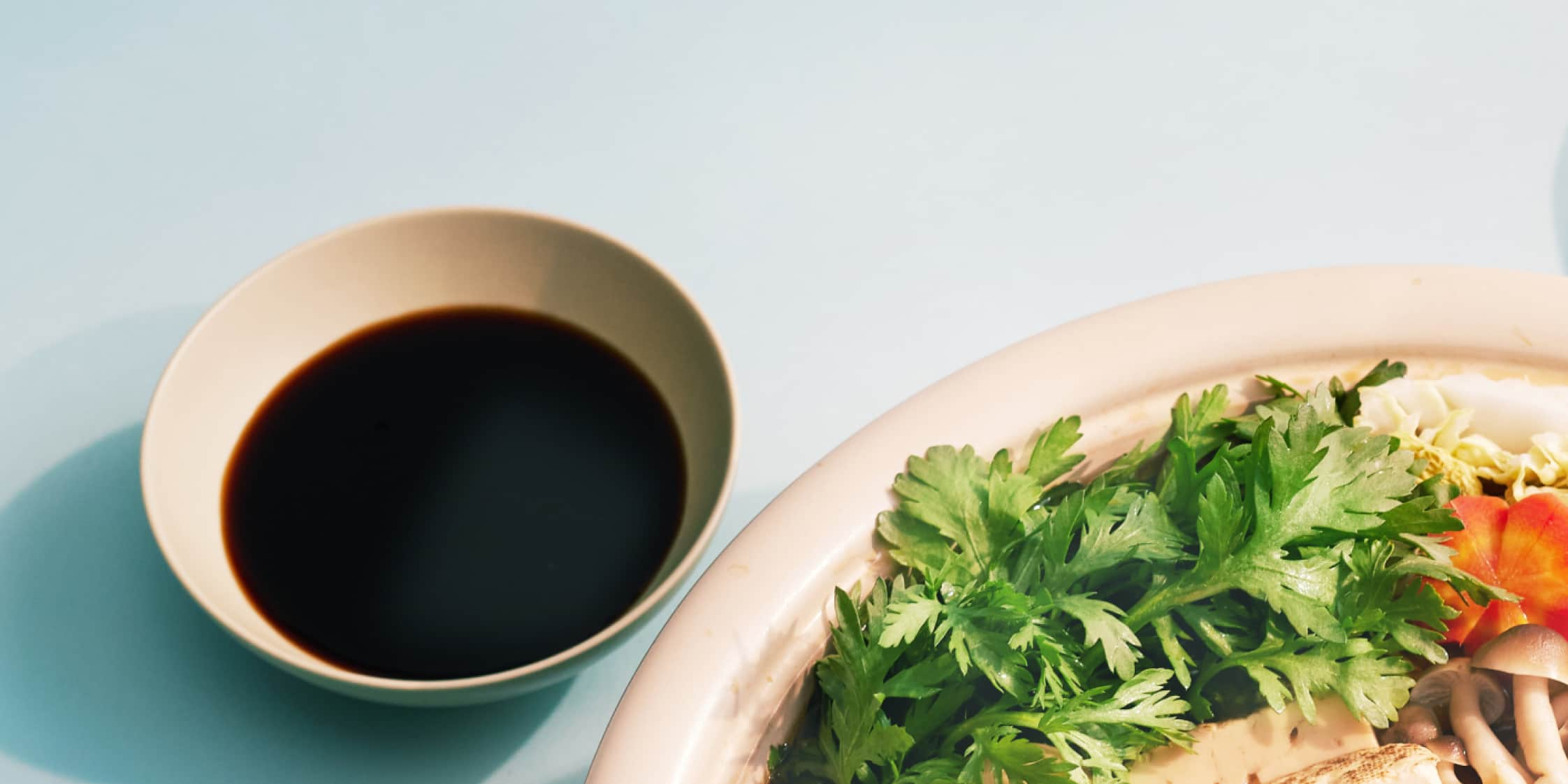

Miso, soy sauce, mirin sweet seasoning, and rice vinegar are known to be indispensable seasonings in the Japanese diet. These seasonings are produced by fermenting microorganisms called koji fungus. Its unique, rich flavor is featured in dishes throughout the four seasons in Japan. The seasonings particularly crafted by the hands of the artisan not only enrich the flavor of the dish, but also can contain less additives. They are delicious and make your body happy. This section introduces soy sauce among these fermented seasonings.
About
SOY SAUCE

History of soy sauce
Soy sauce is a liquid seasoning made from soybeans, koji from wheat, and salt water.
It is said that soy sauce started as the liquid which separated in the process of making miso and was used as a sauce. However, there are still mysteries to be unraveled regarding the origin of soy sauce.

Characteristics unique to Japanese soy sauce
There are many variations of soy sauce from region to region across Japan.
Kanto (*1) soy sauce, which is mostly used in the eastern part of Japan, is darker with a dry, sharp taste. It is often used in soba broth. Kansai soy sauce, which is often used in the western part of Japan is also known as light soy sauce. It has a light color with a lighter taste and is reminiscent of the subtle sweetness of koji. The soy sauce used in southern part of Japan and Kyushu is sweeter due to added sugar, which is perfectly paired with rich flavor of seafood. Tamari soy sauce, which is made in the Tokai region along the Pacific coast in the central area of Japan, does not use wheat and uses an extremely small amount of salt water. It has a sharp flavor and is perfect for meat and fatty tuna.
(*1) A region in Japan. Japan itself is divided mainly into the Hokkaido, Tohoku, Kanto, Chubu, Kinki, Chugoku/Shikoku, and Kyushu regions.
The number of processed seasonings, including ponzu soy sauce and dashi soy sauce, is increasing. In keeping with the characteristics of soy sauce, which is the base of the seasoning, there are products that show their uniqueness by the way they are processed. Soy sauce pairs perfectly with broth and is often used to season bonito broth and kelp broth.
Uncompromising work of the artisans
Since the umami and sodium are strictly regulated by industrial standards,
the number of companies that continue to make soy sauce in a traditional making method is decreasing and soy sauce made by major companies is widely distributed nationwide. The breweries that still make soy sauce using traditional wooden and cedar barrels are rare, and the distribution of such soy sauce accounts for only 1% of the overall distribution.
Health benefits
Blood pressure control and lower cholesterol can be expected from consuming soy sauce.
It perfectly pairs with raw ingredients and is often used for SASHIMI and marinade. Such usage method is appropriate since sodium and organic acids contained in the soy sauce inhibits the growth of colon bacteria.

SOY SAUCE makers’ aspirations
Soy sauce is indispensable in the Japanese diet culture. What goes through soy sauce brewers’ minds and what do they do daily to make flavorful soy sauce? We interviewed Mr. Kichigoro Fueki, the representative of FUEKI SHOYU BREWING, who brews soy sauce in wooden barrels using a traditional method.
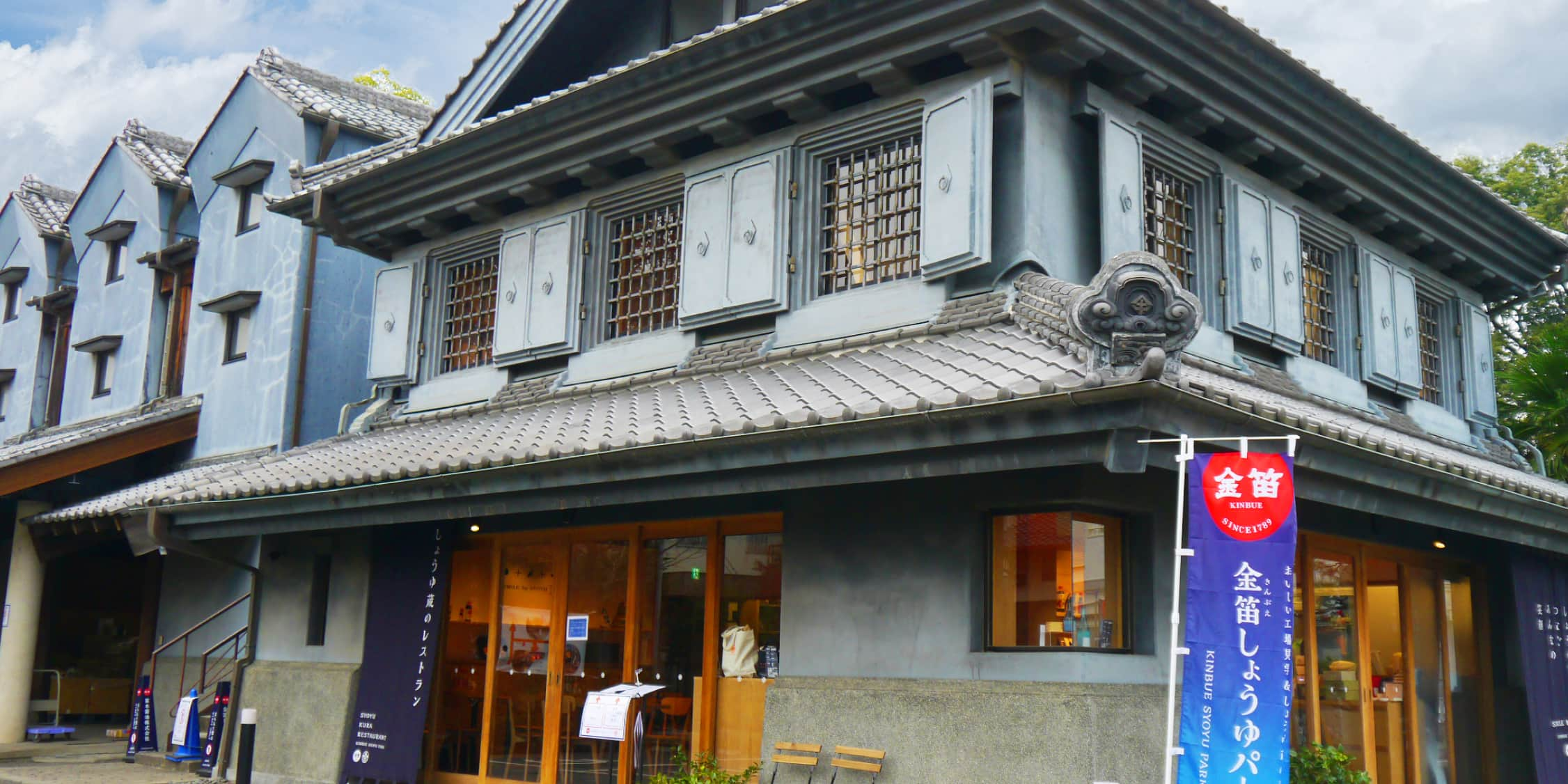
Traditional soy sauce brewing in wooden barrels that convey the personality of the brewer
Please tell us the traditional brewing method treasured by FUEKI SHOYU BREWING?
Fueki:
In soy sauce making in Japan, using imported ingredients is the mainstream nowadays. However, we are committed to brewing soy sauce using domestic unprocessed soybeans and wheat. Soy sauce using domestically grown ingredients accounts for only about 2% of the entire soy sauce industry in Japan.
Since we brew soy sauce in traditional wooden barrels, we cannot artificially raise the temperature. Therefore, soy sauce can ferment slowly in natural conditions throughout the four seasons. Many generic soy sauce breweries artificially raise the temperature of soy sauce in stainless steel tanks to speed up the fermentation, which allows the brewing process to complete in about a half year. With our method it takes one to two years. Thanks to this process our soy sauce has a mellow, subtle flavor.
Regarding temperature control, is there any influence from climate change in recent years?
Fueki:
Since it is naturally brewed, we cannot fight against the climate. This year (2023) was even hotter than the previous year, which sped up fermentation. For instance, there is an important agitation process in soy sauce brewing. When soy sauce is agitated and comes into contact with air it speeds up fermentation. Therefore, we usually don’t agitate it much during summer to control the fermentation process. We also have a room in the brewery to analyze soy sauce, where we look at the statistical data, including the change in the sodium percentage. In this way we take care of soy sauce daily while utilizing an artisan’s intuitions.
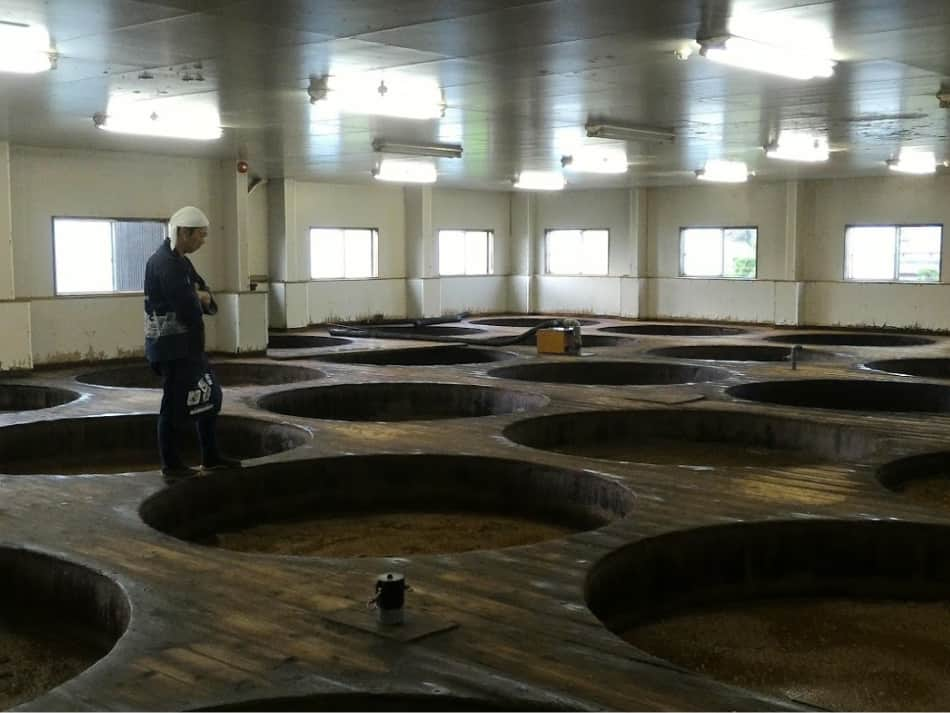
What influence does brewing in wooden barrels have on fermentation?
Fueki:
New and old wooden barrels cause differences in taste. Soy sauce brewed in new barrels tends to have a high level of UMAMI and a striking sharp flavor. On the other hand, the 150-year-old wooden barrels give soy sauce a mellow, subtle, and rich flavor.
Another interesting consideration is that the flavors vary among brewing buildings. Soy sauce is made from the work of microorganisms; koji fungus, yeast, and lactic acid bacteria, and yeast affect the aroma. Each brewing building has unique yeast that has been living there since long ago. That old yeast adds a rich flavor unique to each brewing building. Wooden barrels have their lids open at all times, and the yeast sometimes enters from outside, which changes the flavor.
What are the recipes using FUEKI SOY SAUCE that you recommend?
Fueki:
It is simple, but I recommend grilled rice balls. Make the rice balls, give them a coat of soy sauce and grill them slowly in a frying pan for fragrant, delicious grilled rice balls. Marinading chicken wings in soy sauce and grilling them in a frying pan is also a great recipe. The flavor of the soy sauce seeps into the chicken, leaving it so fragrant.
When pairing with sashimi, since our soy sauce has a richness of red wine, if it were a wine, it is perfect for red-fleshed fish, like fat-rich tuna, rather than light-flavored sea bream. Using a small amount of soy sauce for a sauce for meat is also great as it brings out the aroma and flavor.
A less well-known fact is that soy sauce is used in desserts. When red bean paste is made at Japanese style confectionery stores (*2), many of them use a small amount of soy sauce to bring out the sweetness and umami. I have talked to a pâtissier in the Basque region of Spain, and he was surprised to discover that adding soy sauce deepened flavor of vanilla cream.
(*2) A store that offers traditional Japanese sweets.
Lastly, please tell us what you’d like to promote to people overseas.
Fueki:
We at FUEKI SHOYU BREWING still use traditional wooden barrels and brew soy sauce using domestically grown ingredients. Just like grapes for wine, soybeans which are the ingredient of soy sauce have different tastes if the crop years are different, even if it was part of a crop from the same region. We brew soy sauce by trial and error to maintain premium quality every year. Soy sauce’s taste varies depending on the brewer. The family predecessor and president of our brewing company had strong personality and soy sauce he made was strong flavored. For me, I think soy sauce plays a supporting role just to bring out the flavors of other food, which makes soy sauce taste rounder, subtler than our predecessor’s soy sauce did. I’d like people to enjoy soy sauce in which they can see the face and personality of the brewing expert.
660 Kami-igusa, Kawajima-machi, Hiki-gun, Saitama, Japan 350-0152
+81-49-297-0041
Learn about other
seasonings




